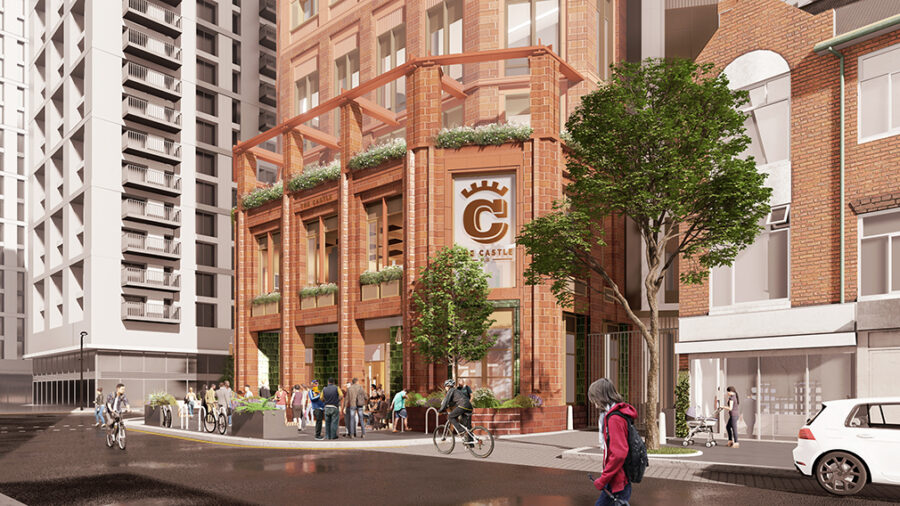UK: IHM, publisher of Urban Living News, held its latest Urban Living Insights: Senior Living event at 25 EP, in partnership with Hubbl.
Urban Living Insights are half-day events which focus on specific asset classes and sectors across the hospitality and operational real estate industries.
This week, senior living had its spotlight. Operators, developers, advisory firms, architects and more joined IHM’s editor-in-chief George Sell to learn more about potential growth, demand, and planning.
To set the scene, Knight Frank’s head of senior living Peter Youngs provided an introduction to the sector. He highlighted that in the UK, there are around 20,000 integrated retirement communities (IRCs) compared to around 1.8 million units in the US. Youngs stressed how the UK is an undersupplied market by emphasising the country’s 25,000 IRCs that are in various stages of development.
Supporting his view, Youngs referenced Professor Les Mayhew’s research into retirement living, which recommends 50,000 units should be built per annum to meet demand. Currently, about 7,000 per annum are completed.
Regarding the investment community, 42 per cent expect to be active across three sectors (senior living, student accommodation, BTR) by 2026. In terms of residential investors, the appetite to be active in senior living is set to more than triple over the next five years.
Youngs concluded his presentation sharing survey statistics from the end user. 44.1 per cent of seniors prefer a bungalow, followed by 24.5 per cent opting for a one-bed apartment and 24 per cent a two-bed apartment. When asked about financial preferences, 45.1 per cent favoured renting compared to 29.9 per cent opting to purchase.
The stat on tenure preferences provided a strong bridge into the next discussion, chaired by Ali Powell of Commercial Acceleration. Debating the rent versus purchasing model, Stewart Moore, COO at Retirement Villages, explained that rentals are a needs-led proposition, taking on average 52 days to complete from the initial enquiry. This compares to 14 months for sales, including 15 hours of contact time.
Honor Barratt, chief executive at Birchgrove, added that one of the benefits of operating a rental model is the ability to adjust with inflation. In January 2023, Birchgrove increased its rents by 14.2 per cent which has helped support rising operational costs such as wages and utilities. Barratt also mentioned that she’s able to re-price rooms as and when these become available.
When asked what’s preventing quicker sales, Moore argued that there is a lack of clarity regarding the product offering. Powell agreed that the sector faces an image problem, with Barratt adding that prospective residents are always surprised by the quality. Moore commented on the generational shift towards renting, such as subscriptions to music, cars, phones and more. He said that despite current stigma around renting and shared ownership, future consideration must be given to this..
The conversation finished on the topic of planning. Moore said that being tied to C2 and C3 use classes “kills us” and that a wider understanding of affordability is necessary. Barratt agreed and called for more operators in the sector to help drive down competition and lower yields.
In the final discussion on planning hosted by Sell, there was a united agreement that senior living developments faced major pushback from local authorities due to lack of knowledge and education. Stuart Garnett from Inspired Villages, Iain Warner from Tetlow King Planning, Matthew Nicholson from Audley Group, and Roland Bolton from DLP Planning Consultants were involved in the conversation.
The challenge arises from classifying senior living and residential house building under the same umbrella. Senior living developers end up competing for sites against house builders as a result of no separate or specialised allocation for projects, whilst planning committees tend to object senior living projects on the grounds of affordability.
A much closer relationship between government and local authorities is required. For example, a statutory period of 13 weeks is advised for planning consent, whereas it currently takes 35 weeks on average for senior housing plus around 20 weeks pre-application for community engagement.
The delay or pause in planning may be of benefit to local authorities, as it would present the time to identify and understand the need for senior housing. Despite the product not returning the same level of profit as house building, 25-30 per cent of the ageing population in local boroughs are being ignored. The trends show that there is demand, and the Taskforce will be valuable next year in pitching and shaping policies for a positive outcome.
Further details about upcoming Urban Living Insights events can be found here, with the next one on work and office taking place 20th September 2023.
To learn more about IHM including our in-person and digital events, please email info@internationalhospitality.media.








